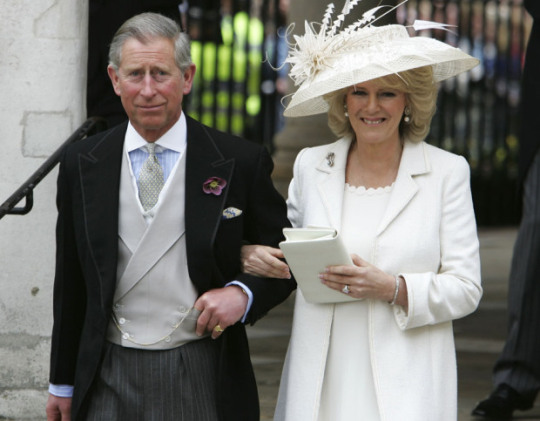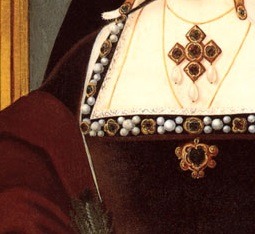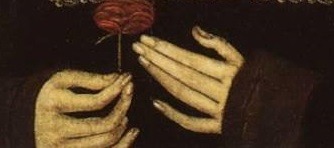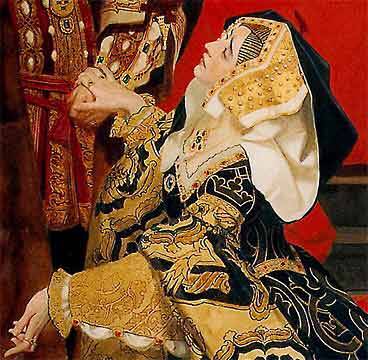
The marriage of Charles and Camilla has some striking similarities to the story of Anne Boleyn, and her public perception.

 ~ Like Anne Boleyn, Camilla was the “other woman” luring the (future) king away from a princess who was beloved by the public.
~ Like Anne Boleyn, Camilla was the “other woman” luring the (future) king away from a princess who was beloved by the public.~ Camilla is not conventionally beautiful, and her appearance has been mocked in the press. People could not understand what Henry saw in Anne Boleyn, either, because she was not beautiful by the standards of the era.
~ Camilla is a mere gentlewoman, as Anne was, rising above her station to capture the heart of a king. Marrying for such an ephemeral reason as “love” has always been suspect in royal circles.
~ Both women were blamed for the ill-treatment of their predecessors.
~ In both cases, the ex-wife clung to her old title, Diana keeping the title of “Princess” and Katharine refusing to surrender the title of Queen. In both cases, the public supported this usage.

~ Both women were the “scandal of Christendom.” Camilla is divorced; Anne had been pre-contracted, requiring a dispensation.
~ Both were the king’s “mistress” (though Anne refused to sleep with the king until they were lawfully wed.)
~ Both were called ugly names disparaging their chastity.
~ Camilla, like Anne, has fought an uphill battle to be recognized as her husband’s lawful consort. However graciously or charitably she behaves, there are many who will never accept nor “forgive” Camilla for usurping Diana’s place. Women were recorded as hating Anne, the “goggle-eyed whore” who made a mockery of the sacred vows of marriage.
 ~ The prince’s “love letters” (phone calls) to Camilla were made public in order to humiliate them. The public salivated and snickered over their playful talk the same way they must have snickered over Henry wishing to kiss Anne’s “pretty dukkys.”
~ The prince’s “love letters” (phone calls) to Camilla were made public in order to humiliate them. The public salivated and snickered over their playful talk the same way they must have snickered over Henry wishing to kiss Anne’s “pretty dukkys.” ~ The prince’s wedding to Camilla was low-key in contrast to the lavish spectacle of his wedding to Diana, the same as with Henry VIII.
~ The prince’s wedding to Camilla was low-key in contrast to the lavish spectacle of his wedding to Diana, the same as with Henry VIII.~ Both of the ex-wives died not long after their divorce. In both cases, the surviving royals were criticized for not being respectful enough of the deceased. People still leave pomegranates on Katharine’s tomb, and visit the estate where Diana is buried.
~
Fortunately, Charles already has his “heir and a spare” and doesn’t seem to be the head-chopping type. Camilla has a chance Anne Boleyn never had - to slowly win the public over and grow into her role as consort. Whether she will ever be the Queen of England remains to be seen, but it seems public perception of her is softening as time passes. Anne had only a scant three years. Her reign is mostly known from the “tabloids” of her day, and so we may never have a clear picture of what she was really like, and what she could have become had she survived Henry’s obsession.
That's a really interesting perspective! And they talk about history repeating itself.
ReplyDeleteWow, that's very insightful. I would have named only a couple of these similarities and you have listed many. Especially apropos is your comparison to the modern press. Would you care to try this with other historical vis-a-vis modern figures? In any event, keep up the good work, from Erik at theoryofirony.
ReplyDeleteHenry VIII's wedding to Katherine of Aragon was no fancier than his marriage to Anne Boleyn - or any of his wives.
ReplyDeleteCharles is also not an all-powerful diagnosable narcissist living in a world where not having a male successor could see a king overthrown. He would have had no reason to kill Diana even without the heir and the spare.
PS Diana did not "cling to her old title"; the style she used, 'Diana, Princess of Wales', was in accordance with modern custom; the late Duke of Marlborough's (many) ex-wives were similarly referred to as '[Name], Duchess of Marlborough'.